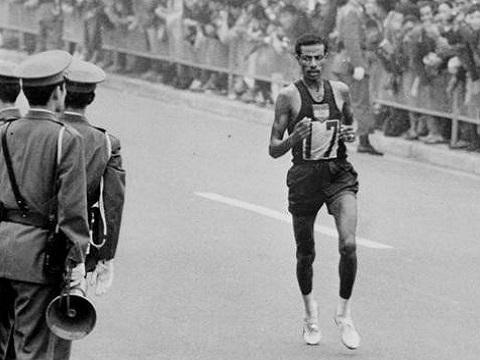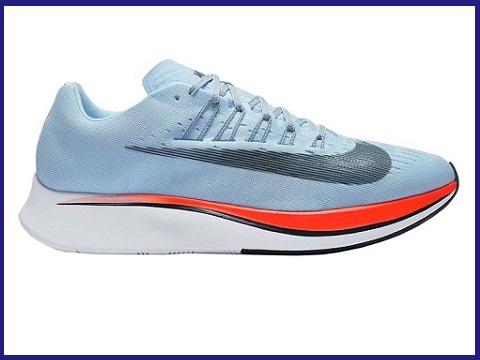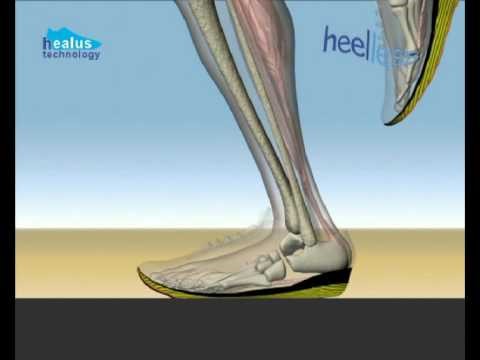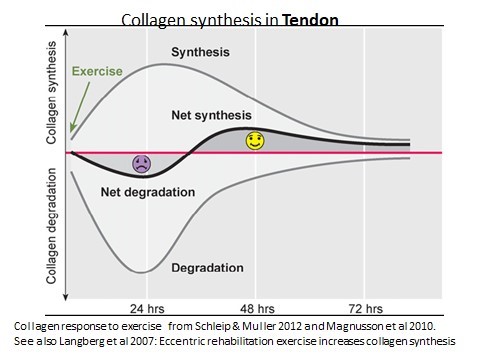Presentation
Presented at the Staffordshire Conference of Clinical Biomechanics 20-21st April 2011
Authors
Adri Hartveld1 & Roozbeh Naemi2,
1Physiotherapist and Director, Healus Technology, Healus Ltd, Stoke-on-Trent, UK
2Senior Research Officer, Research in footwear biomechanics, Staffordshire University
Address for Correspondence: Use the contact form in the top menu
Email: adri@healus.co.uk
Adri Hartveld and Roozbeh Naemi relate the development of road running racing shoes to the progression of marathon world record times and give the audience predictions of world record marathon times and road running shoes of the future.
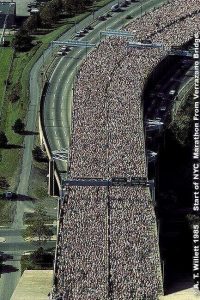
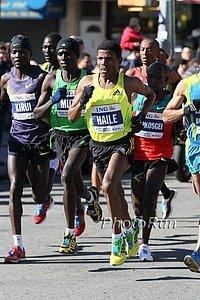
Introduction
Road running is a very popular pursuit and fascinates people worldwide. Man’s attempt to run 26.2 miles in record time inspired many to improve one’s own fitness. The historic progression of world marathon records, physiological determinants and the current world record of the half marathon (58min 23sec) indicate that a sub 2hour marathon is well possible and might be achieved by 2021(1, 2). A more detailed analysis of the world marathon records is required in particular in relation to the footwear the elite runners trained and raced on. This will shed light on the influence of footwear on running speed and on the necessary protection for running fast on hard roads.
Results
Numerous stories and data could be found on the worldwide web, and most information was available on various sites and were consistent with each other.
Figure 1 highlights the progression of world records over the last 52 years and divides this history in three periods of footwear development

Figure 1: The progression of world records over the last 52 years during the three footwear periods: minimalistic footwear (green), footwear emphasis on heels (yellow), footwear emphasis on midfoot and forefoot (blue).
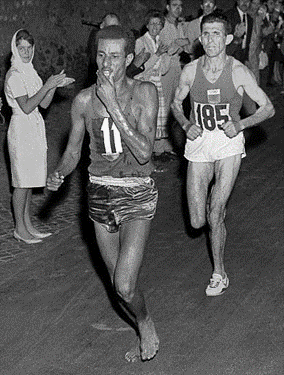

Abebe Bilila
1960 – 2hr 15′ 16
1964 – 2hr 12′ 12
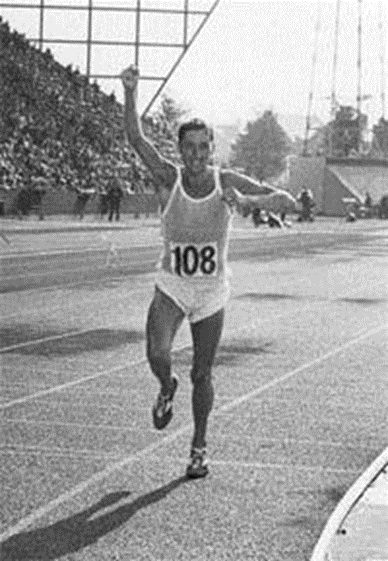
The rapid progression of world records during the 1960s up to Ron Hill’s world best of 2hours 9min 28 seconds in 1970 were ran on minimalistic racing flats or even barefoot (Abebe Bikila 1960 Rome Olympic Marathon). This area is highlighted in green in Figure1.
The slow progression of best marathon times in the 70s, 80s and 90s was during a period in which the shoe industry concentrated on shock absorption in the heels. The area highlighted in yellow in Figure 1 shows the trend during the period of 1970 to 1998.

In 1999 the 2 hour 6 minutes was finally broken by Khalid Kannouchi in New Balance racing shoes with “Abzorb” in the forefoot area of the midsole. The area highlighted in blue in Figure 1 shows the trend in the latest period of running footwear development in which shoes have been developed that have less weight, but have improved shock absorption and energy return in the forefoot area of the sole.
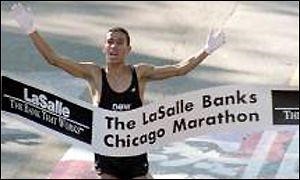
Both the first sub 2hour 4minutes marathon (by Haile Gebreselassie in 2008) and the current world record of 2h 03min 38sec (by Patrick Makau in 2011) were ran on the AdiZero Adidas racing shoes which have a weight of just 210 grams per shoe (for UK size 9) and have considerable forefoot cushioning.
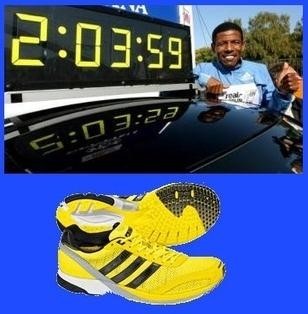
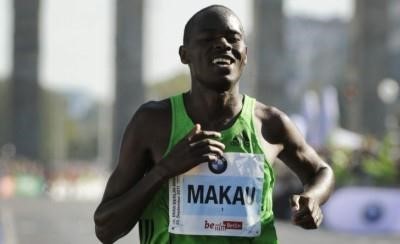
Recently road running footwear has been developed which weighs less than 160 grams and have even better forefoot cushioning and resilience through the patented SFD SE system(3).
Discussion
The world marathon records in the 1960s were broken on minimalistic footwear. When the running boom hit the world in the 1970s, running shoe designs were developed to provide shock absorption through the heel. However during fast running humans tend to land on their forefoot. In order to absorb the high gravitational forces during the first part of the stance phase in running, the ankles eccentrically plantar flex over a greater distance than when the landing is on the heel. A basic application of the second law of Newton shows that a touch down with the ball of the foot reduces the stress on the body, as compared to a heel strike. A range of descriptive and experimental studies(4, 5, 6, 7) have indeed shown that landing on the ball of the foot (metatarsal heads) is preferential in terms of impact forces and running speed. Fast athletes run with their foot striking on the ball of the foot (metatarsal heads). Such athletes particularly use the calf musculature as vertical force decelerator and providers of energy return; the muscles absorb the body weight with eccentric contractions plus passive elasticity and push the body back up and away every step of the way.
Ever since the running boom in the 1970’s scientists and shoe brand manufacturers studied the science of distance running in order to develop tools to prevent injuries and aid performance. The limiting factor for marathon running times is fatigue and soreness in the leg muscles which provide this spring like action. To meet the need of protection from the hard road, the sole needs to have a certain amount of shock absorption to complement the natural shock attenuating function of the leg extensor muscles of the runner. The shoe sole also needs to be light weight to ensure the minimum resistance to the running action. Attempts to provide footwear with minimal weight and optimal shock absorption concentrated on the rear part of the shoe sole for 28 years despite the fact that, increasingly, elite marathon runners made little use of the heel of the shoe. This heel focus in the development of footwear might well explain the low rate of 5.6 seconds per year improvement of the world marathon record in the period of 1970-1998. In the beginning of the 21st Century various footwear designs have been developed to reduce the impact of such forefoot strike on tarmac roads or hard synthetic running tracks. Theoretically such footwear can delay the point at which the marathon runner has to slow down due to the fatigue in the muscles. Sound biomechanical evidence has been provided with regards to the effectiveness of cushioning provided by the shoe sole through in vivo laboratory studies on runners, in vitro testing of shoe soles and related mathematical modelling(8).
Recent laboratory studies on running efficiency comparing shod running with barefoot running have resulted in contradictory findings with regard to footwear and running economy(9, 10, 11).
World record marathon runners in the 1960s ran with a very similar running style compared to the world record marathon runners in the 21st Century: with a forefoot strike. An increase in cushioning in the forefoot is likely to reduce the muscle fatigue induced by running fast for more than 2 hours non-stop. However the cushioning material used gave the athlete considerable energy loss due to hysteresis of the material and increased weight of the running shoe. In recent years new materials with better energy return and new shoe designs have become available. Some of these developments have filtered through to the marathon runners trying to break world records, but not yet all.
Road running shoes for racing are considered optimal if the sole material provides both cushioning and energy return (to prevent muscle fatigue and soreness) and if they are lightweight (to minimise resistance to the running movement). Several biomechanics studies confirm the value of low weight, cushioning and energy return(12) to promote running speed and reduce muscle fatigue. Arguably the improvement of world marathon records from 1998 to 2012 at a rate of 14.2 seconds a year is linked to footwear development. Although running footwear has stayed conventional with only small changes, there has generally been a focus away from the heel to the sole part below the midfoot and forefoot, especially in racing shoes. If this current development of footwear, continues, it can be predicted that a sub 2 hour marathon will be achieved in 2026.

In other sports more radical new designs have led to a more rapid progression of world records. For example, in the late 1990s the Dutch invention the “klapschaats” (“clap skate”) brought about sudden and marked reductions in the world record times in speed skating. More radical running shoe designs might bring about a quicker change in best marathon times.
One such future improvement option in road running shoes is the Healus Footwear concept, which replaces the heel with a shock plate which provides Sole Force Distribution and Sense Enhancement(3). The latest prototype of this concept, for road racing, has considerable cushioning in the forefoot areas, and low shoe weight (158 grams). In the footwear industry which is renowned to be conservative such radical approach might well assist the elite runner in breaking the 2 hour barrier not later but sooner than Joyner et al’s prediction(1) of 2021.
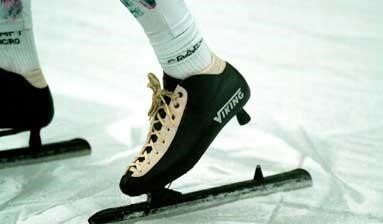

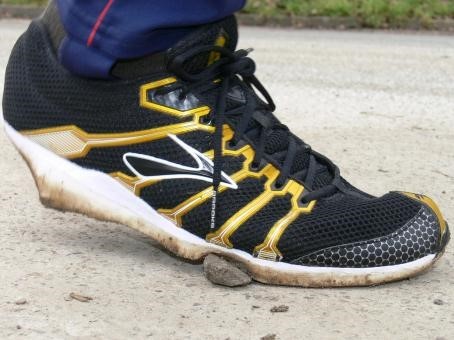
References
[1] Joyner, M.J. Ruiz, J.R. & Lucia, A (2011), “The two-hour marathon: who and when?” J. Appl. Physiol. 110: 275–277, 2011
[2] Joyner MJ, Coyle EF. Endurance exercise performance: the physiology of champions. J. Physiol. 586: 35–44, 2007.
[3] Hartveld, A. (2007), “Footwear with sole force distribution and sense enhancement”, PCT Patent application publication WO/2007/026175, www.wipo.int
[4] Lieberman, D. et al (2012), Foot strike patterns and collision forces in habitually barefoot versus shod runners, Nature, 463 p531-535.
[5] Arendse, R.E., Noakes, T.D., Azevedo, L.B., Romanov, N., Schwellnus, M.P. & Fletcher, G. (2004), “Reduced eccentric loading of the knee with the Pose running method”, Med. Sci. Sports Exerc., 36, 2, 272-7.
[6] Scholten, S.S., Stergiou, N., Hreljac, A, Houser, J., Blanke, D & Alberts, L.R. (2002), “Foot strike patterns after obstacle clearance during running”, Med. Sci. Sports Exerc., 34, 1, 123-9.
[7] Williams, D.S., McClay, I.S. & Manal, K.T. (2000), “Lower extremity mechanics in runners with a converted forefoot strike pattern”, J. Appl. Biomech., 16, 210-218.
[8] Shorten, M. & Mientjes, M.I.V, (2011), “The ‘heel impact’ force peak during running is neither ‘heel’ nor ‘impact’ and does not quantify shoe cushioning effects”, Footwear Science, 3, 1, 41-58.
[9] Perl DP, Daoud AI, Lieberman DE. (2012) Effects of Footwear and Strike Type on Running Economy. Med Sci Sports Exerc. 2012 Jan 3. [Epub ahead of print]
[10] Franz, J.R.; Wierzbinski, C.M. & Kram, R. Med Sci Sports Exerc (2012) Metabolic Cost of Running Barefoot versus Shod: Is Lighter Better? 2 March 2012 Published Ahead-of-Print
[11] Hanson, N.J., Berg, K., Deka,P., Meendering, J.R.. Ryan, C (2011) Oxygen Cost of Running Barefoot vs. Running Shod, Int J Sports Med
[12] Nigg, B.M. Biomechanics of Sport Shoes. University of Calgary Press, 2011
